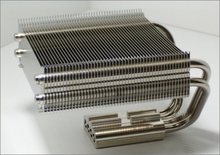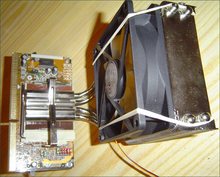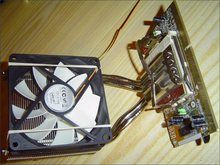MatureTech wrote:
I only went there because I've had a bad problem with cumulative fan noise.
I had a similar complaint with my main computer; the solution I found that worked best was a combination of re-working how fans/airflow is directed through the case, noise-damping products (don't expect these, by themselves, to solve noise problems though), and switching heatsinks out for bigger models with slower moving fans. The end result is that it not only is quieter, but it runs cooler as well. I did give up some performance (I shed two GPUs in the process), but it's nothing I notice day-to-day.
Moving to bigger, slower fans tends to make the noise less annoying - especially if you take the time to set them up to work together, versus fighting each other; since re-doing all of that (it did take some trial and error) I don't even really bother dusting my case out, because it doesn't need it on average (maybe an annual once-over but it doesn't have to be opened and cleaned monthly).
The idea was to put a big passive heat sink on the CPU and let one case fan do the work. But now with the Athlons I have the different problem that they will self-destruct if the fan freezes up before I notice that it's failing. So I'll end up putting in a new heat sink not because the old one was loud or broken but because the fan rattles a bit and I don't trust it. 😒
Rattles can be caused from a few things - in some cases it's just the fan not sitting right on its shroud (which can usually be fixed by playing with it), or it can be caused by the fan not sitting right on its bearing/hub (which can usually not be fixed). Might be worth playing around with it out of the case to see exactly what's causing the rattle.
As far as a quiet-running Athlon system, the SI-97 that's been mentioned a few times pared with a quality 92mm fan will produce a very cool and very quiet running Socket A or Socket 370 system. There are other Thermalright heatsinks, like SLK800, SLK900, etc along with various other good models from Zalman (like CNPS7000 and similar), Swiftech (I forget the exact model # - it looks like it's made out of a lot of screws), Thermaltake (Tower-112 and 102 among others - I vaguely remember they also had a model with a TEC built-in), and AeroCool (Silent Tower or something along those lines - I vaguely remember there was an "Anniversary Edition" that had a gold-plated contact plate and worked very well). Just mate them up with a quality fan (Panaflo or Delta are my go-to suggestion, but I hear good things about Scythe and Noctua) and you should be set for a long while.
Some of the above models support multiple fans as well, if you want redundancy (the Thermaltake towers are a good example of that).



